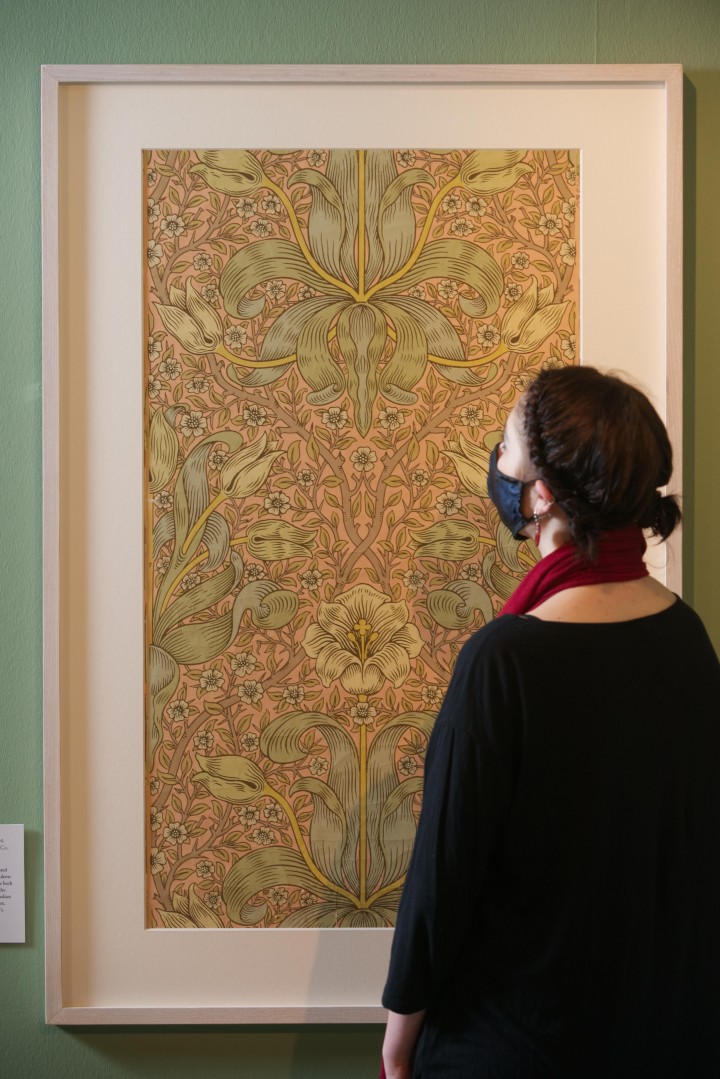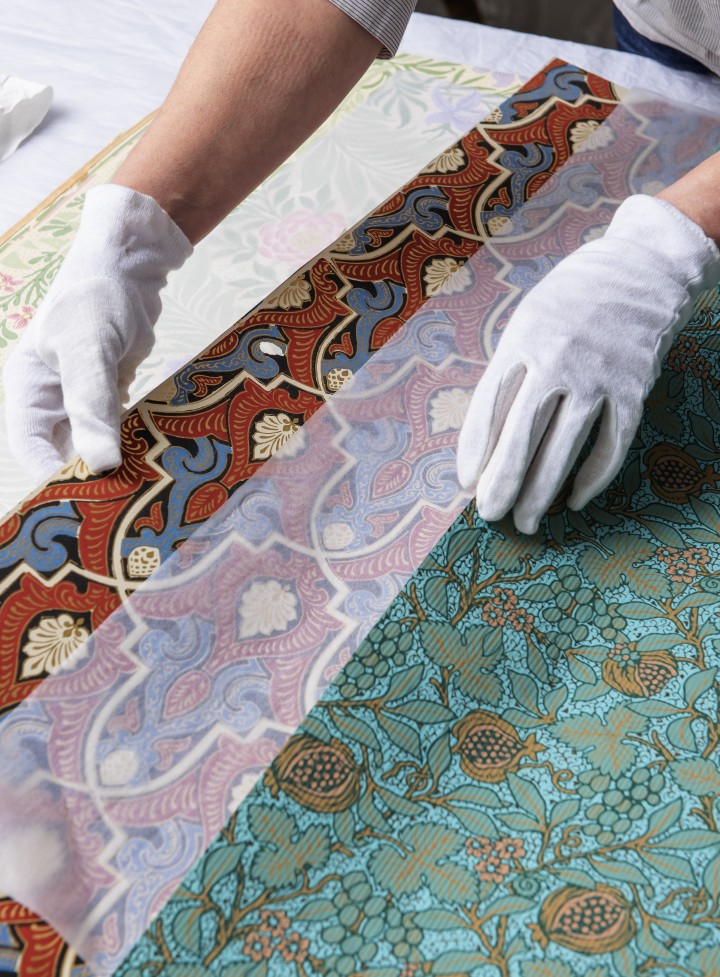Scottish Art News
Latest news
Magazine
News & Press
Publications
The Art of Wallpaper
By Susan Mansfield, 02.02.2022

William Morris is one of the cultural giants of the 19th century, an artist and friend of the Pre-Raphaelites, a poet and novelist who contributed to the beginnings of the fantasy genre, a socialist and political theorist, outspoken on architectural and environmental conservation. And also, as this exhibition celebrates, a designer of wallpaper.
Curator Mary Schoeser has brought together an extensive collection of framed wallpapers, from the archives of Morris & Co, the company he founded, and Sanderson, with whom he was closely associated, showing what he was influenced by and reacted against, what his contemporaries were doing and how his designs continue to be produced today (Morris & Co celebrates its 160th anniversary this year).
By the mid 19th century, wallpaper was all the rage, led by luxurious French brands often featuring flowers and rococo swirls. However, figures such as Augustus Pugin and Owen Jones described these as “design debauchery”, ushering in a more restrained approach to colour and pattern.
This is the context in which Morris should be understood, inspired by the natural world, by forests gardens and hedgerows, but using stylised versions of natural forms to create repeating patterns, and employing a two-layer printing process to build a sense of depth. In this way, he created some of his most famous designs, ’Larkspur’, ‘Jasmine’, ‘Chrysanthemum’, ‘Willow’, ‘Acanthus’, which are still familiar to us today.
 Archive Wallpapers. Courtesy Dovecot / Morris & Co.
Archive Wallpapers. Courtesy Dovecot / Morris & Co.
These must, one surmises, have made the firm enormously successful, though little detail is given. We learn, almost in an aside, that Morris & Co decorated Balmoral for Queen Victoria, and that its wallpaper even found its way to the Winter Palace in St Petersburg. There is little sense, however, of how widely it was used, and by whom, and no pictures of the 19th-century interiors for which it was created.
While Morris is repeatedly described as “influential”, there is little sense of how that influence proliferated, though the show does touch on others working at the same time, such as C. F. A. Voysey and Christopher Dresser. The show also includes Morris’ daughter May, who headed up the embroidery division of Morris & Co from the age of 23. May Morris' extensive work in this field was celebrated in an exhibition at Dovecot Studios in 2020.
While offering a wealth of information on who made wallpaper for whom in the 19th century, the show does not capitalise on the colourful, contradictory man at its heart. Morris drew on the medieval in his aesthetics, although his most famous maxim - ‘Have nothing in your houses that you do not know to be beautiful or believe to be useful’ - seems to anticipate the modern. His socialism was devout and commited, but his copy of Marx’s ‘Das Kapital’ (in French) was handbound in gold-tooled leather.
The Art of Wallpaper - Morris & Co. is on at Dovecot Studios, Edinburgh, until 11th June.




